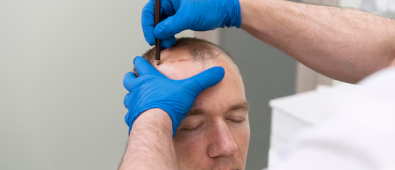Understanding Vaginismus and the Role of Physical Therapy
Vaginismus is a condition that affects a woman’s ability to engage in any form of vaginal penetration, including sexual intercourse, tampon insertion, or a gynecological exam. It can be caused by physical factors such as medical conditions, injury, or surgery; psychological factors such as fear or anxiety; or both. Fortunately, there are treatments available that can help alleviate the symptoms associated with this condition, including physical therapy. Let’s take a closer look at how physical therapy can help with vaginismus.
How Physical Therapy Helps With Vaginismus
Physical therapy for vaginismus works by helping patients learn to relax their pelvic floor muscles. This is often done through the use of progressive dilation exercises which involve inserting progressively larger objects into the vagina in order to stretch the muscles and reduce tension. This helps to reduce pain during penetration and make it easier for women to engage in sexual activity. Other techniques such as biofeedback, relaxation exercises, and stretching can also be used in order to reduce any discomfort associated with vaginal penetration.
In addition to helping with pain management, physical therapy can also help address any underlying psychological issues that may be causing or contributing to vaginismus. For example, cognitive behavioral therapy (CBT) can be used to address issues related to fear or anxiety surrounding vaginal penetration. Through CBT activities such as relaxation exercises, visualization techniques, and talking therapies, patients can develop coping skills that will enable them to manage their emotions more effectively when faced with situations that could potentially trigger vaginismus symptoms.
Finally, physical therapists who specialize in treating this condition may also recommend lifestyle changes such as avoiding certain triggering activities (such as having sex) until they feel ready or engaging in regular exercise which has been shown to have positive effects on mood and stress levels. By incorporating these strategies into their treatment plan, physical therapists can help women gain control over their bodies and improve their overall quality of life.
Acknowledging Support Systems
It is important to remember that physical therapy for vaginismus is not a stand-alone treatment—it should always be supplemented by other forms of care such as support from family and friends as well as psychotherapy if necessary. Additionally, it is important for patients undergoing physical therapy for vaginismus to recognize the importance of self-care practices such as getting enough restful sleep each night and eating healthy meals throughout the day in order to ensure optimal results from their treatment plan.
Conclusion:
Physical therapy plays an important role when it comes to treating vaginismus—it helps patients learn how to relax their pelvic floor muscles while addressing any underlying psychological issues that may be causing or contributing to this condition. However, it is important for patients undergoing treatment for vaginismusto remember that physical therapy should never be seen as a stand-alone treatment—it should always be supplemented by other forms of care such as support from family and friendsas well as psychotherapy if necessary. Additionally practicing good self-care habits will help ensure optimal results from your treatment plan!


